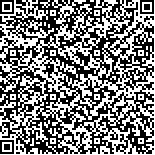| 引用本文: | 王超,付瑞嘉,左倩,曾晓涛,徐顶巧,唐于平,刘继平.蓍草防治急性肝损伤的作用机制及量效关系研究[J].中国现代应用药学,2024,41(15):12-11. |
| wangchao,furuijia,zuoqian,zengxiaotao,xudingqiao,tangyuping,liujiping.Study on the Mechanism and Dosage-Effect Relationship of Achillea alpina L. in Preventing and Treating Acute Liver Injury.[J].Chin J Mod Appl Pharm(中国现代应用药学),2024,41(15):12-11. |
|
| |
|
|
| 本文已被:浏览 604次 下载 447次 |

码上扫一扫! |
|
|
| 蓍草防治急性肝损伤的作用机制及量效关系研究 |
|
王超, 付瑞嘉, 左倩, 曾晓涛, 徐顶巧, 唐于平, 刘继平
|
|
陕西中医药大学
|
|
| 摘要: |
| 目的 基于网络药理学和多指标综合指数法,旨在探究蓍草防治急性肝损伤的作用机制,并评价不同剂量的蓍草(1.56,3.12,6.24,9.36,12.48,15.60 g/kg)的肝保护作用。方法 本研究运用网络药理学预测了蓍草对肝脏损伤可能的作用靶点和与相关疾病的潜在关系,并通过分子对接和免疫荧光检测进行了验证。实验采用四氯化碳橄榄油溶液诱导大鼠急性肝损伤,测定了多项指标包括肝指数、谷丙转氨酶(ALT)、谷草转氨酶(AST)、肿瘤坏死因子-α(TNF-α)、白介素6(IL-6)、白介素1β(IL-1β)、过氧化氢酶(CAT)、超氧化物歧化酶(SOD)、谷胱甘肽过氧化物酶(GSH-Px)、丙二醛(MDA)和谷胱甘肽(GSH)。最后采用主成分分析和CRITIC权重分析法综合评价蓍草对肝脏保护效应。结果 共获得351个蓍草和ALI的共同靶点。网路药理学分析发现,AKT1,TNF和ALB为前3个核心靶点,主要涉及PI3K/AKT信号通路。免疫荧光染色显示,蓍草下调了急性肝损伤大鼠肝脏中PI3K、AKT和TNF蛋白的表达,上调了ALB蛋白的表达。与正常组相比,模型组中各指标有显著性差异;与模型组比较,蓍草不同剂量给药组能较好改善急性肝损伤大鼠的各项指标水平,并呈一定的量效关系。综合主成分分析和多指标综合指数法得出,蓍草在浓度为15.60 g/kg时的肝保护作用最明显。结论 蓍草具有防治急性肝损伤的作用,这可能与蓍草调节PI3K信号通路有关;当蓍草剂量为15.60g/kg时,其药效最好,这为蓍草的合理应用奠定了基础。 |
| 关键词: 蓍草 PI3K/AKT信号通路 CRITIC权重分析法 多指标综合指数法 量效关系 |
| DOI: |
| 分类号: |
| 基金项目:国家重点研发计划(2019YFC1711000);陕西中医药大学学科创新团队项目(2019-YL10) |
|
| Study on the Mechanism and Dosage-Effect Relationship of Achillea alpina L. in Preventing and Treating Acute Liver Injury. |
|
wangchao, furuijia, zuoqian, zengxiaotao, xudingqiao, tangyuping, liujiping
|
|
Shaanxi University of Chinese Medicine
|
| Abstract: |
| Objective: The aim was to investigate the mechanism of Achillea alpina L. in preventing and treating acute liver injury (ALI) and assess the hepatoprotective effect of different doses of Achillea alpina L. (1.56, 3.12, 6.24, 9.36, 12.48, 15.60 g/kg) using network pharmacology and a multi-index comprehensive index method. Method In this study, network pharmacology was used to predict the potential targets of Achillea alpina L. in liver injury and its potential relationship with related diseases. The results were validated using molecular docking and immune fluorescence detection. Acute liver injury was induced in rats using carbon tetrachloride and olive oil solution, and multiple indicators were measured, including liver index, alanine aminotransferase (ALT), aspartate aminotransferase (AST), tumor necrosis factor-α (TNF-α), interleukin-6 (IL-6), interleukin-1β (IL-1β), catalase (CAT), superoxide dismutase (SOD), glutathione peroxidase (GSH-Px), malondialdehyde (MDA), and glutathione (GSH). Finally, principal component analysis and CRITIC weight analysis were used to comprehensively evaluate the hepatoprotective effect of Achillea alpina L.. Results A total of 351 common targets for Achillea alpina L. and ALI were obtained. Network pharmacology analysis revealed that AKT1, TNF and ALB were the top 3 core targets, mainly involving the PI3K/AKT signaling pathway. Immune fluorescence staining showed that Achillea alpina L. downregulated the expression of PI3K, AKT, and TNF proteins, while upregulating the expression of ALB protein in the liver of rats with acute liver injury. Compared with the normal group, there were significant differences in various indicators in the model group. When compared with the model group, Achillea alpina L. at different doses could better improve the levels of various indicators in rats with acute liver injury and exhibited a certain dose-effect relationship. Through principal component analysis and a multi-index comprehensive index method, it was determined that the dosage of 15.60 g/kg of Achillea alpina L. had the most significant hepatoprotective effect. Conclusion Achillea alpina L. has a preventive and therapeutic effect on acute liver injury, which may be related to the regulation of the PI3K signaling pathway by Achillea alpina L. When the dosage of Achillea alpina L. is 15.60 g/kg, it exhibits the best therapeutic effect, which provides a basis for the rational clinical application of Achillea alpina L.. |
| Key words: Achillea alpina L. PI3K signal pathway CRITIC weight analysis method multi-index comprehensive index method dose-effect relationship |
|
|
|
|
